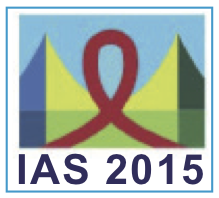IAS 2015: accessing webcasts and abstracts online
1 August 2015. Related: Conference reports, IAS 8th Vancouver 2015.
Simon Collins, HIV i-Base

Selected webcasts from IAS 2015 conference are now posted online. Abstracts are also available, but only via a pop-up window in the euphemistically named Programme at a Glance, and not with a unique URL.
Also, many oral presentations have not been included in the webcast coverage this year, with no indication in the programme of what will be webcast.
Online access has an essential and established educational role, supported by the IAS, and is the only way many people are able to track the advances discussed at the meeting. The webcasts also broaden the wealth of experience that is brought together for the few days of the meeting.
In recent years, the opportunity to present has been linked to permission to webcast, and it is a shame that this helpful precident seems to have been dropped for IAS 2015.
This year, the main way to access individual webcasts and abstracts is though the online Programme at a Glance:
The interface to navigate this online programme is a little tricky.
There are two ways to find a webcast.
- Use the search link to look for a name or topic, and then click on these search results to open the session in which the talk was presented. If a webcast or abstract is available there will be a button in either the column with the session time and number or underneath the presentation title.
- Click one of the sessions in the progamme calendar. This will open a new window that lists the talks in that session and, as above, look for the buttons.
A URL for a webcast is available from the “download” link but abstracts do not have this option. Links to download poster PDFs are only via a link at the bottom of the pop-up abstract window.
As with previous conferences, all symposia, plenary and oral abstract sessions are expected to go online. However, the programme doesn’t show which sessions will have webcasts so there is not an easy way to see which other sessions are online.
The interface for watching sessions seems good and shows both the slides and the presenter, either in a web browser screen or as a full screen option.
A limited version of the abstract book and the full abstract book are published in PDF format as a supplement to the Journal of the IAS.
http://www.jiasociety.org/index.php/jias/issue/view/1475
http://www.ias2015.org/WebContent/File/IAS_2015__MED2.pdf (18.4 Mb).
Abstract should become available as single html pages with an individual DOI and html web page, although these links were not yet active as we went to press.
Selected webcasts
With so many talks to chose from, the following three webcasts are recommended as direct and easy to understand reviews of key themes to the meeting: cure research, prevention options and changes for global health.
From care to cure. Nicholas Chomont, Monday plenary (9 am)
A 30 minute comprehensive overview by one of the key researchers in cure research on key scientific approaches. (IAS 2015, MOPL0103).
[media not available]
Treatment as Prevention versus other biomedical prevention. Francois Venter, Monday plenary (10 am)
A direct 30 minute talk by a leading activist doctor and researcher from South Africa, who reviews the dynamic options now available to really reduce new infections and to improve care. He challenges health services to be truly centred on the people who are using them. (IAS 2015 MOPL0106).
[media not available]
Rapid uptake and adoption of the WHO 2013 Consolidated ARV guideline recommendations
Meg Doherty from WHO maps the impressive uptake of guidelines that pave the way to achieving the 90/90/90 global target. (IAS 2015 MOAD0101).
[media not available]

